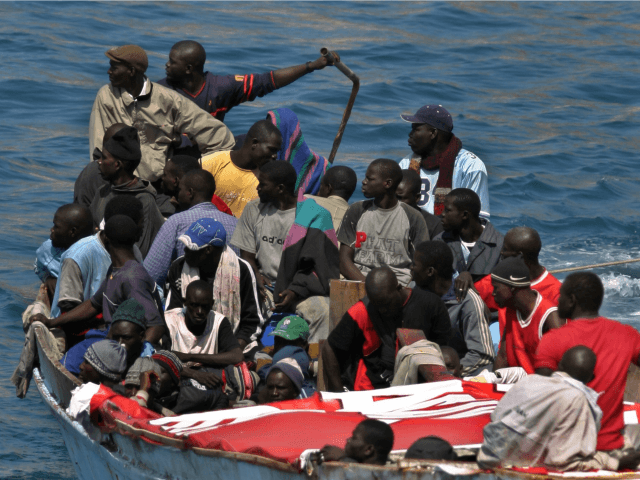A new report suggests that huge economic interests lurk behind a number of NGOs and cooperatives dedicated to bringing as many immigrants as possible into Europe.
In a story in the Italian newspaper Libero Monday titled “The Real Black Gold,” Gianluca Veneziani investigates the ways that migrant rescue missions are being carried out in the Mediterranean Sea and who exactly is profiting most from the exploitation of Europe’s migrant crisis.
Although the media routinely describe maritime rescue operations as taking place in the Strait of Sicily, in point of fact most of the missions take place just a few miles off the coast of North Africa, Veneziani states.
The essay cites a recent, viral YouTube video by Luca Donadel, who used a sophisticated, satellite-based tracking system to demonstrate that the majority of NGO rescue operations have been taking place just a few miles off the Libyan coast. None of them, he notes, took place anywhere near the Strait of Sicily.
Rather, the ships have been running a migrant shuttle service along well-defined routes running back and forth from the coast of Libya to the Italian island of Sicily, Donadel declares.
According to the United Nations Convention on the Law of the Sea (UNCLOS), Donadel observes, rescue missions assisting those in danger on the seas are bidden to take those in need to the “nearest port” of call, and not to another distant port. In the case in point, Zarzis, Tunisia, is the nearest safe port and is nearly three times closer to northern Libya than Sicily.
Why is this happening, when from a commonsense as well as legal standpoint the migrants should be taken to a nearby African port rather than to relatively far-off Italy?
The new tactic by human traffickers, Donadel claims, is to use cheap, dilapidated vessels that would have no way of ever making the trip across the Mediterranean, sure that just a short distance from land they will be assisted by rescue ships who will take their human cargo to Italy. This has brought about an exponential increase in the number of deaths at sea, he adds.
Moreover, the vast majority of those being assisted are not refugees, but economic migrants who seek a better life in Europe. The European Commission has declared that approximately 80 percent of migrants arriving in Italy are “irregular” (illegal) and therefore ineligible for asylum.
In this effort, Italy has invested more than $3 billion of public funds for the assistance and care of migrants. The majority of the money spent by the Italian government winds up in the hands of cooperatives and NGOs, who have made a business of shuttling migrants from Africa to Europe and providing services for them once they reach Italy. The migrant handling business has grown enormously in recent years to accommodate the influx of illegal immigrants.
The availability of huge sums of public money has provided an irresistible incentive for many cooperatives and NGOs to keep the numbers of illegal immigrants high, Donadel suggests.
A number of specific examples can be found in a book by Mario Giordano titled Profugopoli, which documents in great detail the financial movements involved in Italy’s growing migrant business and who is getting rich as a result.
Follow Thomas D. Williams on Twitter Follow @tdwilliamsrome

COMMENTS
Please let us know if you're having issues with commenting.